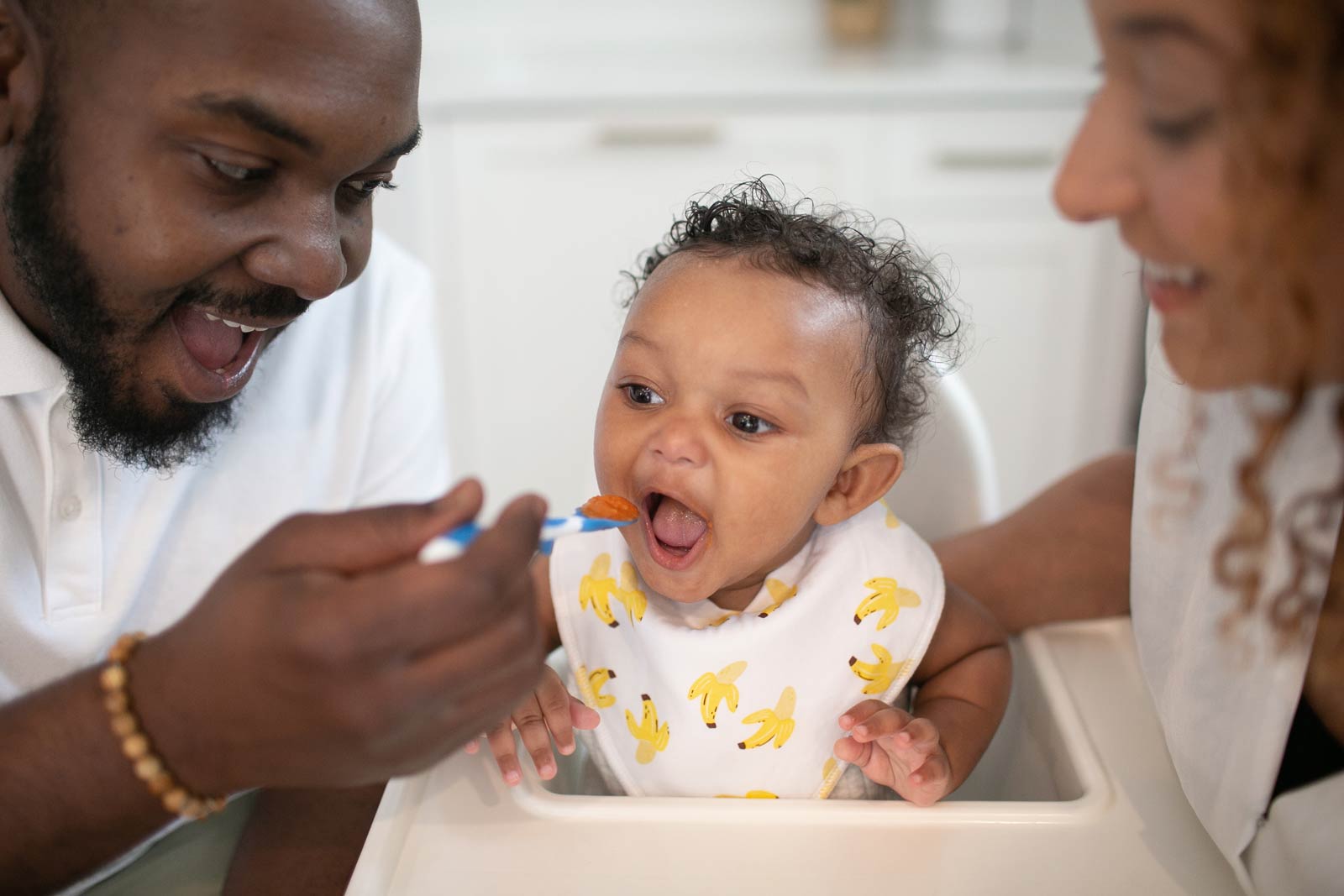Five Things Every Parent Should Know About Feeding Babies and Toddlers
Hannah Hargrove, RDN, CLCM
This blog was written in paid partnership with Dr. Brown's.
As a pediatric dietitian and mom myself, I know from working with countless parents and feeding my own child that sometimes feeding little ones can be stressful. Here are five simple but important tips every parent should know about feeding babies and toddlers to set them up for a positive mealtime experience and to help their child develop a positive relationship with food.
1. It's Not Your Job to Get Your Child to Eat
You read that right — and hopefully it provides some relief! If there is one thing I wish every parent could be educated on, it's The Division of Responsibility, which clearly defines the roles of the parent/caregiver and child in the feeding relationship.
It is the parent or caregiver's job to decide what, when and where a child eats. It is up to the child to decide if and how much they will eat.
With this method of feeding, you are able to be considerate (but not cater) to your child's preferences. For example, if you know your child prefers their noodles plain, you can serve sauce on the side, or include two vegetables (one that they like and one that they're learning to like).
At each meal or snack there should always be a "safe" and filling food served that your child eats. So in the event they choose not to eat the other foods served, they will have an option they can fill up on.
If this safe food is served and they don't eat it or the other foods served (or maybe just don't eat as much as you think they should), you can be confident they're just not very hungry. Offering an alternative is NOT recommended and can lead to picky eating.
2. Your Baby Might Not Eat Much When You're First Getting Started on Solids
When you're first getting started on solid foods (around 6 months, as recommended by the American Academy of Pediatrics (AAP) it's common for them to not eat as much as you anticipated. In the early weeks, babies are literally learning how to eat, so what actually makes it to their belly isn't always all that much.
It's important to ensure you're serving the key nutrients they need when starting solids like iron, zinc and vitamin C, so you can nutritionally optimize the bites they're taking.
Every baby progresses on their own timeline with how much they're eating from solids. It's common to see an increase in solids around 9-10 months old. It's important to remember breast milk or formula are the primary nutrition source for the first 12 months of life.
3. It's Ok if Dinner Isn't Their Best Meal of the Day
For most adults, dinner is the largest meal of the day, so we expect this to be true for children. But did you know it's actually very common for dinner to be the meal that some children eat the least at?
By dinnertime your child is getting tired with bedtime approaching and they have been eating all day so they really just may not be very hungry.
As long as you're following the division of responsibility and offering a "safe" food at dinner, it's ok if your child doesn't eat as much as you'd expect. They may just have a larger appetite for breakfast in the morning.
4. The Perfect Portion Is the Portion Your Child Eats
One of the most common questions I receive from parents is "how much should my child be eating?" The truth is there isn't an exact amount your child should be eating at each meal or snack. The perfect portion is how much they're eating – as long as you're allowing them to follow their internal hunger and fullness cues.
Appetite and intake fluctuate from meal to meal and day to day. As long as you're serving nutritious foods and allowing them to decide if/how much they eat, their nutrition needs tend to average out over the span of a few days. It's important not to focus too much on one meal or snack but instead look at the big picture.
But for reference, one tablespoon per year old is a good rule of thumb. For example, if your child is 2 years old, 2 tablespoons can be an expected portion (but again, it's ok if they eat more or less!). Starting with smaller portions is actually recommended and can lead to MORE intake. Large servings can be overwhelming for small children and can make them less willing to eat. Start small and offer more based on their intake.
5. Playing at the Table Isn't a Bad Thing
Actually, I recommend it! Young children learn through play, and learning to eat and explore new foods is no different. Eating is a sensory experience, and the more we engage the five senses at mealtime, the better—especially touch! Involving play at mealtime can make foods more interesting and approachable, and it makes them more likely to touch the food, which is the first step to tasting!
About the Author
Hannah Hargrove, RDN, CLC, is a pediatric nutrition expert with a passion for empowering parents. As an RDN (registered dietitian nutritionist) and CLC (certified lactation counselor), she spent years guiding families on infant and toddler nutrition. Now, after experiencing motherhood firsthand, Hannah has transitioned to a more educational role. You can find her evidence-based advice on Instagram (@tinyeatersnutrition) and her website (tinyeaters.co). Hannah's mission is to bridge the healthcare gap by providing accessible, practical nutrition education for busy parents.


